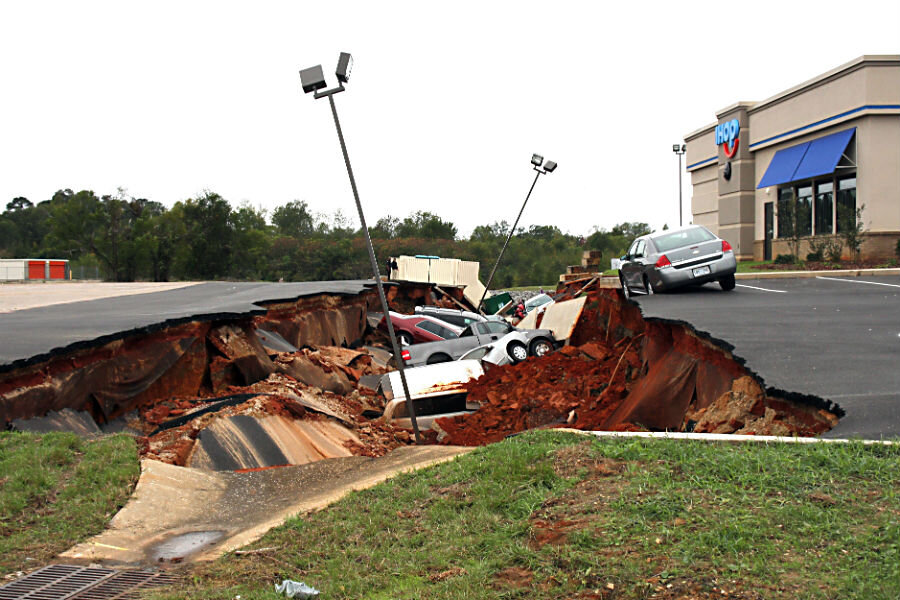Huge hole swallows 12 cars at IHOP: Don't call it a sinkhole?
Loading...
They just wanted some pancakes.
But instead, the land underneath this Mississippi IHOP parking lot burst right open Saturday evening, swallowing 12 cars, SUVs, and trucks.
Gwendolyn Fikes told the Meridian Star that she and her daughter barely sat down when her daughter’s Honda Accord fell into the gash in the earth.
"We'd been in there about three minutes," Fikes said. "Then everything went black and we heard a boom."
The customers in Meridian, Miss., discovered what had happened when they ran outside after experiencing what felt like an earthquake. But it wasn’t an earthquake, and it wasn’t a sinkhole either.
Meridian Public Safety Director Buck Roberts told the Sun that the 35-foot wide by 400-foot long gash in the ground is not a sinkhole, but he’s not sure yet what caused it.
"You can call it what you want, a cave-in or whatever, but it is not a sinkhole," Mr. Roberts said.
The city has received 3 inches of rain this weekend, and nearly 10 inches in the last two weeks, WTOK reports. Several witnesses on scene say they believe a water line ruptured as well, that left nearby hotels without water.
Engineers and contractors will be studying the scene Monday, he added.
A sinkhole typically forms when underground water aquifer creates a void in the soil above. As The Christian Science Monitor previously reported:
Sinkholes start with water and limestone... Limestone dissolves in water, and the more acidic the water, the faster the limestone gets eaten away. What starts as a small hole deep underground can grow bigger and bigger until it's a cave you could walk upright in. Flowing ground water keeps dissolving away the top, sides, and bottom of a limestone cave, enlarging it in all directions. For people living on the surface above these caverns, there's no obvious sign that the ground beneath their feet is being eaten away from below.
Geophysical surveys can peer beneath the surface, but to the naked eye, everything looks fine. There's no sign that you're essentially walking on the surface of a hollowed-out eggshell.
On Saturday, no one was hurt from the collapse in Meridian, aside from the cars that fell into the giant cut across the land.
Emergency crews were called to the IHOP about 7:15 p.m. and found the cave-in to be 15 feet deep.








